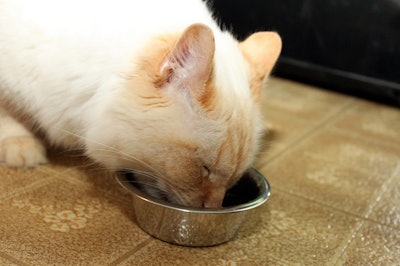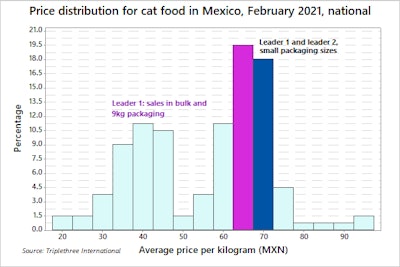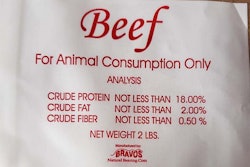
How do you set your prices for your pet food products? Do you rely entirely on cost and gross profit? Is such a method efficient in terms of market competition and revenue? Probably not, especially in Latin America.
Market concentration is perhaps the most significant constraint for pet food businesses in the region. In several markets, just two brands dominate the entire pet food environment. Why?
There are two unavoidable conditions to attain leadership in this industry. One is having a wide geographical presence, and the second is using an efficient pricing strategy. Usually, most pet food manufacturers have one of the two, while market leaders may achieve both.
An efficient pricing strategy consists of tackling the market not with one single price, but using many. To fulfill such efficiency, pet food producers usually rely on different packaging sizes and presentations of the same product/brand and set different prices.
Example with actual pet food data from Mexico
In Mexico, the dry cat food market is concentrated, with two brands that represent nearly 40% of the product inventory in both modern and traditional channels. These products cost between MXN 62 and MXN 72 per kilo (US$3.00 and US$3.40, respectively).
The rest of the cat food market comprises other brands that offer lower prices than the leaders. Yet one of the market leaders also offers prices below US$3.00 for its umbrella cat food brand, using larger packages and bulk sales. (See Figure 1.)

Figure 1: In Mexico, the market leaders dominate the cat food arena with high prices but also affordably priced products.
This information suggests that, although the market leaders dominate the cat food arena with high prices, they may also cover themselves by offering affordable prices. In other words, the leaders play all along the pricing curve.
Therefore, such leading companies are efficient as they use high, medium and low prices alike that fit all types of pet food consumers.
What is best for a pricing strategy?
While most manufacturers set prices for pet food products considering their costs and desired margins, others account for competitors, thereby fixing their prices below the market leaders to avoid losing market share.
Pricing in the pet food business is essential to stimulate demand and appeal to diverse consumers willing to pay different prices for the same brand/product and consumption occasions. Both consumers and manufacturers benefit from such an approach.
















